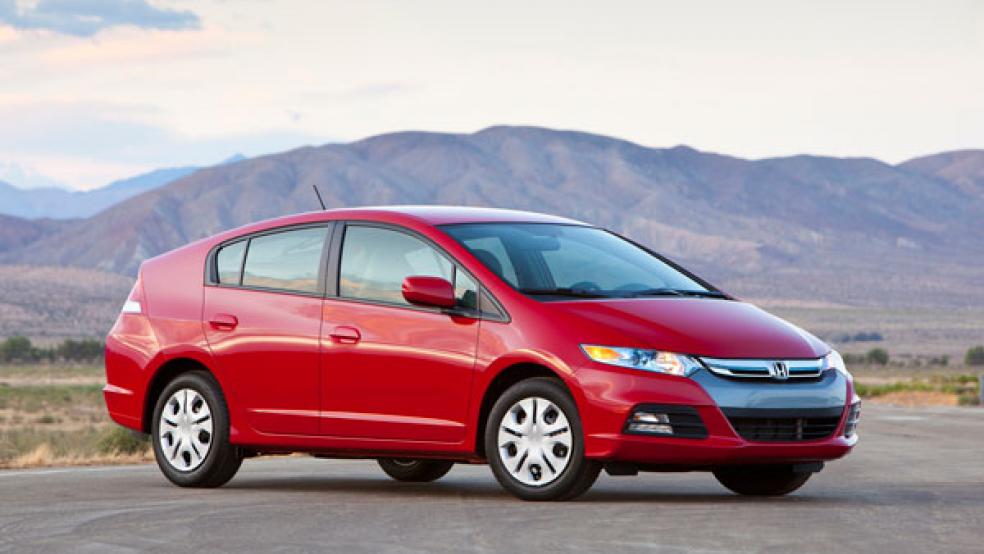Like every other facet of travel, the cost of renting a car is on the rise. AAA estimates that during the most recent holiday season, weekend daily car rental rates were about $63 dollars. That was 15 percent higher than in 2012.
Despite the increase, savvy travelers are still finding deals. Here’s how to do it.
Related: 7 Travel Secrets from Frequent Flyers
Where you rent counts. Shop around before booking a car directly from a rental company’s website. Compare the prices you can find on a travel website, such as Priceline (you can pay a flat fee or bid on a car as you would a flight) or Orbitz. Then see whether your employer, credit card affiliation, insurance plan, or other membership offers a discount rental plan, and search online for coupons and discount codes.
Avoid renting the car at the airport itself, where prices can run at least 20 percent higher than elsewhere and lines tend to be longest. You may come out ahead by taking a cab or shuttle to an offsite rental facility.
Rudy Maxa, consumer travel expert and host of the public television series Rudy Maxa's World, recently went through the process himself. “I needed a car for 22 days in Los Angeles in early December,” he says. “I went to Hertz’s website and it said $1800. Avis? $1800. Enterprise? $1800.” He tried bidding less for a rental at Priceline but that didn’t work.
Finally Maxa found a Hertz rental desk at a Santa Monica hotel and checked prices through his insurance company. “It was just unbelievable the difference – $208 per week. I paid less than $700 for my 22-day rental with Hertz. I’ve never seen a difference that dramatic.”
Related: 6 Tricks for Cheaper Travel – Are They Worth It?
Maxa still had to jump through hoops. The insurance company site only allowed him to rent a car for nine days at a time, so Maxa rented for one nine-day stretch and then another – and finished with a four-day rental. A commercial shuttle bus cost him only $1.50 to get from the airport to the hotel.
The location where you rent can count even more when it comes to international travel. With compulsory insurance that is “often equal to the daily rental cost,” renting a car in Italy, for example, can be expensive, according to Maxa. When going to northern Italy, he flies into Geneva, where rates are much cheaper. “Italy is 15 minutes across the border.”
Play the game. If you use Priceline, check several rental sites for the going rate when you need a car – including all taxes and fees – and then bid 35 percent less, Maxa recommends.
“Don’t set [a reservation] and forget it,” says Max Levitte, CEO of consumer website Cheapism.com. “Keep checking to see if prices drop.” If they do, make a new reservation, get confirmation, and cancel the old one.
Register for the frequent-customer programs, which allow you to accumulate points that you can use for free rentals. If you’re self-employed, see if the rental company has a small business program. Not only will you get points, you might also get a lower rate.
Related: 7 Secrets to Scoring Cheap Airline Tickets
Another frequent-traveler trick is to make a reservation for an economy car. Often the company will be out of them and you’ll get a free upgrade to something roomier. If there is an economy car, you can likely pay more for a larger car at pick-up time.
Don’t automatically sign up for rental insurance. First check if you’ve already got coverage. In many cases, your auto insurance will provide rental coverage, and your credit card may offer collision (but not liability) coverage up to a certain amount.
If you’re a frequent renter and you don’t own a car, consider getting a non-owners’ auto policy. That’s what Steve DellaPietra of Belmar, N.J., did when he “got tired of paying the $20 per for liability coverage from the rental companies.”
He found a non-owners’ policy that costs a few hundred bucks a year for liability coverage and depends on his credit card for collision and theft.
Use your smartphone. Use the phone to take pictures from every angle to document the car’s condition before you drive off the lot. When you return the car, take more pictures. If something happens to the car after you leave, you have proof you weren’t at fault.
Download a free navigation app like Waze and skip the GPS rental. Then use a gas-price app like GasBuddy to find cheap fuel before you return the car. Filling up at the rental agency can run double what it costs off-site.
Consider car-shares. If you only need a car for a short period – like a portion of a day – on a regular basis, it’s likely cheaper and easier to use a car-sharing service like ZipCar or Hertz 24/7, rather than a traditional rental. Such services usually charge a low monthly or annual fee and offer a specific number of miles per day (along with free gas and insurance). If you’re a member of such a service in one city, you can usually easily access its cars when traveling in another metro area.
Top Reads from The Fiscal Times:


